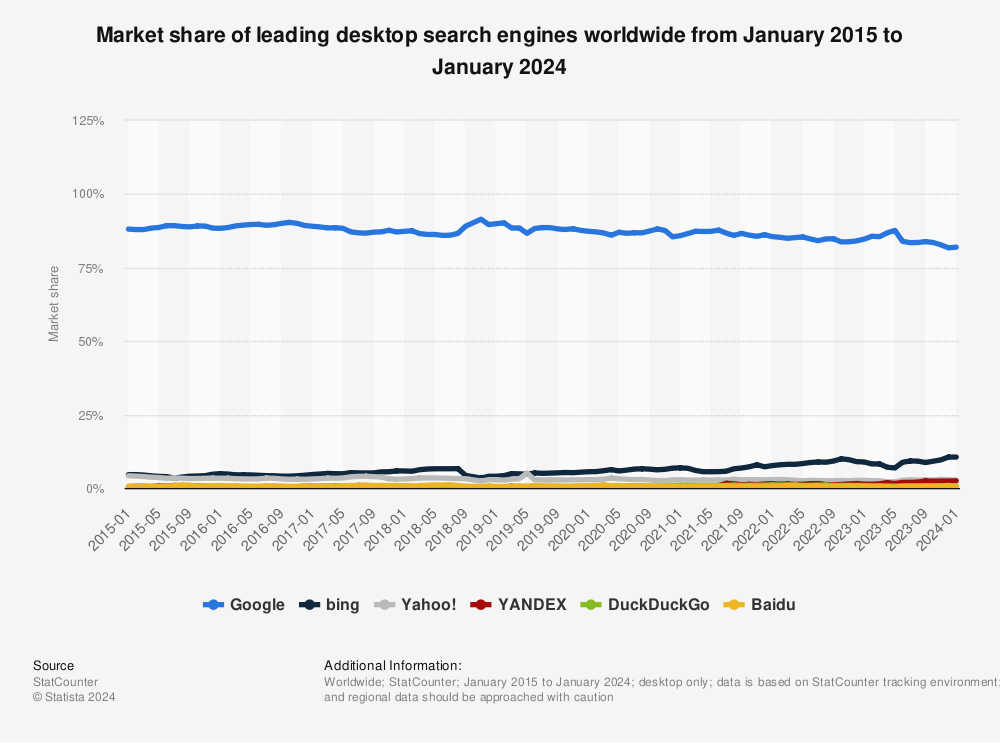When it comes to paid search advertising, two names dominate the landscape: Google Ads and Microsoft Ads (previously Bing Ads). Both platforms enable businesses to get their products and services in front of potential customers who are actively searching for what they have to offer. With so many similarities, the choice of where to put your advertising dollars is critical to maximize the Return On your Investment.
This post breaks down five critical differences between Google Ads and Microsoft Ads and explains why these differences matter when planning your digital marketing strategy.
1. Market Reach and User Base
Google Ads has an unmatched market reach because it is part of the world’s biggest search engine. It opens up a huge and dynamic audience for ads on Google Search, YouTube, and other Google products. In contrast, Microsoft Ads may have a smaller market share, but it offers access to a distinct demographic via Bing, Yahoo!, and other affiliated websites. Microsoft Ads users are typically older and have higher household incomes, which can benefit specific businesses.
Google Ads is a great option for businesses that want to reach as many people as possible. By using Microsoft Ads, on the other hand, you may be able to reach a large audience with possibly less competition in your field.
The size of your target group should help you decide which platform to use. For businesses that offer highly specialized goods or services, Microsoft Ads may be a better choice compared to Google Ads, which reach a huge but less specific audience. Google Ads is best for reaching a lot of people, while Microsoft Ads may have higher conversion rates in certain groups.
2. Cost and Competition
Because there is more competition for popular keywords on Google Ads, the cost-per-click (CPC) prices tend to be higher. On the other hand, Microsoft Ads often has lower CPCs due to lower competition, providing a more cost-effective choice for small and medium-sized enterprises (SMEs) or organizations in highly competitive industries.
Even if one network is more costly than the other, marketers can make better use of their money by knowing how costs fluctuate over time. Variations in the CPC can occur at any moment, even during the day, and it is extremely volatile.
Before you make a final decision, carefully assess your advertising budget. For campaigns with constrained budgets, increasing the number of clicks per dollar spent on Microsoft Ads could translate to a better return on investment (ROI).
3. Ad Formats and Features
When it comes to adding new ad types, ad extensions, and tools that give advertisers more ways to get their message across, Google Ads is usually the first. Although Microsoft Ads incorporate most of the ad formats offered by Google, Google Ads outperform them in terms of richness and functionality.
At the time of this writing, Google advertising allows you to create text, display, video, shopping, and call ads. However, Microsoft Ads is limited to three types of ads: text, app install, and multimedia.
Choosing the right ad formats and features is crucial for a successful campaign. Marketers need to think about what their campaign goals are and then choose a platform that has the features they need.
4. Audience Targeting and Data Insights
Google Ads provides comprehensive targeting choices as well as detailed analytics based on Google’s massive user behavior and preference data. On the other hand, While Microsoft Ads has many targeting choices, it also has exclusive access to LinkedIn Profile Targeting, which makes it especially useful for business-to-business advertisers.
Both platforms offer various targeting features such as location, device, language and time of the day/ day of the week. You can also utilize retargeting which allows you to target an audience that previously interacted with you. For example you can target people who visited a particular page of your website, but did not purchase product. This feature is better implemented in Google Ads when you are using Google Analytics as your data analytic platform.
Optimizing ad campaigns requires access to extensive data and effective audience targeting. Before deciding on a platform, advertisers should think about how their marketing plan will be supported by the data and targeting options available. It’s been said that if something cannot be measured, it cannot be proven!
5. Geographical Reach and Local Advertising
While both platforms offer global reach, there are nuances in their geographical strengths and local advertising capabilities. Google Ads provides extensive reach with powerful local advertising features, making it an excellent choice for businesses aiming to target customers in specific regions or localities across the globe. Microsoft Ads also offers robust local advertising options, but its strength in certain geographical locations, such as the United States and the United Kingdom, where Bing has a higher market share relative to other countries, can be particularly beneficial for businesses targeting audiences in those regions.
For businesses that rely heavily on local traffic or that are looking to penetrate specific international markets, understanding the geographical strengths of each platform is crucial. Google Ads is typically the go-to for broad international reach and detailed local targeting. In contrast, Microsoft Ads can offer a competitive edge in markets where Bing has a stronger presence, potentially leading to lower costs and higher engagement from a local audience.
The choice between Google Ads and Microsoft Ads doesn’t have to be binary. Many advertisers find value in leveraging both platforms to maximize their reach and effectiveness. By understanding the key differences and their implications, you can make informed decisions that align with your business goals and audience preferences. Ultimately, the right choice depends on your specific needs, budget, and marketing objectives.
Keep in mind that you need to track how well your campaigns are doing and make adjustments or reallocate resources as needed. The work here will never be finished!
